I am off down South India to Tirunelveli again this week for personal reasons ; so here is a post on Padmanabhapuram palace that is located near Kanyakumari.
On a hot sultry afternoon, we have our little tryst with history in a small wooden palace. There are no red carpets that are rolled out as we enter or bells that announce our presence. No brightly lit chandeliers greet us at the entrance. Neither do we find marble statues in a scenic garden nor magic fountains that burst out in a musical symphony. Our entry is quiet and unnoticed except for an old caretaker who barks an order at us as we fumble for money to buy the tickets.
Palaces in India can either be the ornate magnificent edifices that glow in the aftermath of their past glory or humble structures that live almost in obscurity, hoping that a few tourists will grace them with their visits. They vanish from the political maps and slowly make their way into tourist maps, only to be lost there as well and be tagged as offbeat destinations.
But there is nothing really nondescript about the Padmanabhapuram palace. The Western Ghats form a dramatic backdrop as the palace rises from the ground, spreading itself and forms a part of a granite fortress . On a bright sunny day, the peaks of the mountains peep out from behind the whitewashed walls and the thatched roofs and the clouds pose for the tourist, who is hoping to take home a little digital souvenir.
We walk through the tiny door, bending almost in reverence to the sovereigns who built this palace and made the town their capital. Home to the Travancore kings, we are at the Thai Kottaram or the Mother’s Palace , that refers to the oldest part of the monument, that was built way back in mid 16th century. It is the mother of all the buildings here, as none of the mothers really stayed here, says the guide . We are in for a whirlwind tour of history.
It was called the Kalkulam Palace and was built initially by Iravi Perumal Kurukshetra Perumal in the 16th century says the guide. I marvel at the courtyard, the traditional “nalukettu” where the sloping roofs seem to hug me as the four pillars support the structure. A small room of solitude, aptly called “Ekantha Mandapam” opens into some intricate sculptures as the guide beams , looking at a single pillar made of jackfruit wood.
The palace I hear has had a makeover two centuries later by Marthanda Varma. Varma dedicated his entire kingdom to the deity Padmanabha and named his capital and palace after the God, but the kings seemed to have left their origin once they shifted the capital to Thiruvananthapuram.
We walk through the Mantrasala, a dark but intricately designed chamber for the King’s Council and admire the traditional wooden carvings, the hanging lamp, the coloured mica on the windows and every stamp of the Kerala style of architecture. The journey into Travancore history takes us into the Natakashala or the Hall of Performance and the Upprika Maliga which leads us into the rooms of the royalty and the Theekee kottaram or the Southern Palace.
The guide is careful to lace the history with trivia. He occasionally pauses to show us an intricately designed cot which he says is made of 64 wooden pieces gathered from the trunks of the medicinal trees or to show us the toilet of the kings. I am however taken in by the Ambari Mukhappu, the structure in the form of an Ambari on an elephant, where the king would sit and view the chariot races.
After walking across several rooms displaying pots and pans, cloaks and daggers, curios and carvings, I step into the virtual art gallery where the the paintings showcase the lives and the events of the Travancore kings and murals depict scenes from the epics. The tour seems to end for a few here , while I wander around watching the sun play with the latticework, casting reflections on the dark smooth floor, which the guide had painstakingly explained was made of a special mixture of egg white and coconut shells among other materials.
The sun is sharp for a moment but the reflections fade as the clouds join the party. The play of light puts me in a reflective mood. Palaces I realize are also symbols of fading glory. Even as kingdoms vanish, new states are formed, borders blur, monuments live and die everyday in India. Some come back with a new identity and a renovated face to the tourists, while others languish in ruins and disappear with the passage of time, keeping all their stories within them. As I turn to leave, the 300 year old clock tower in the complex brings me back to the present times.

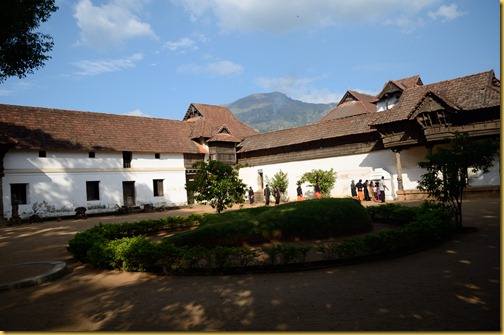
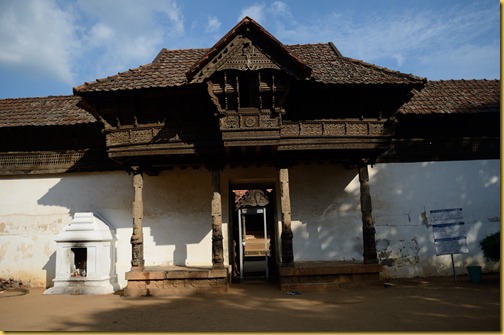
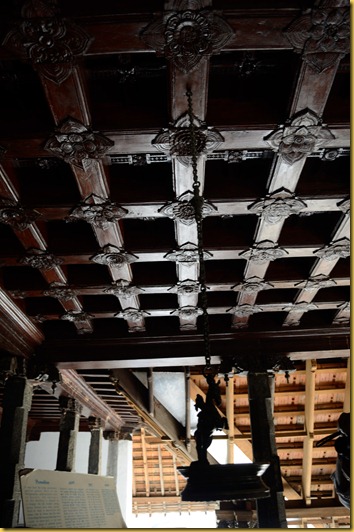
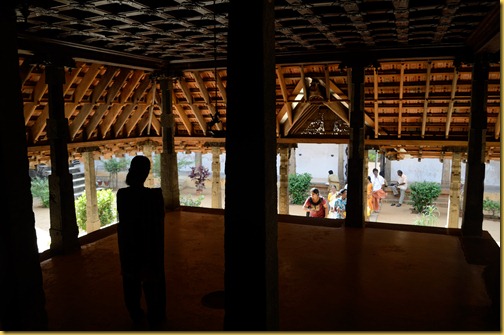
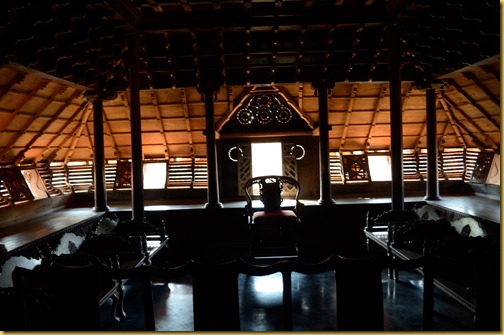
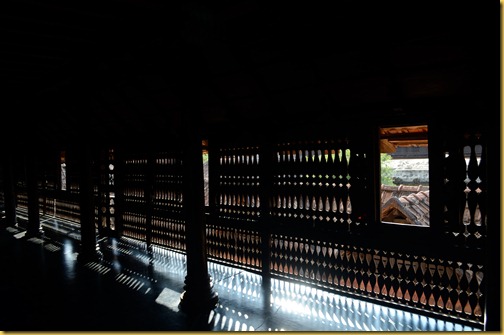
it is a interesting palace for sure..and different from the “idea” of palaces 🙂
http://www.myunfinishedlife.com/
मैने अपनी केरल यात्रा के दौरान इसे देखा था । इस महल के आसपास केले के बागो को दृश्य भी बडा ही सुंदर है
Never heard of such a palace before! Nice to know about such ‘unexplored destinations’.
This is a beautiful palace with extraordinary woodwork. Nice narration.
http://rajniranjandas.blogspot.in/2013/02/maha-kumbh-mela.html
It is a beautiful place and fortunately well maintained too.
This reminds me of my school days, where more or less every year the school management took us to this Palace for excursions. I may remember every corner of this place 🙂
Nostalgic!
Wow!! what the pictures you have show to this place. In next month I am going to married and planning for such kind of place for honeymoon. Now my search has been end here.
Thanks
As you said, this is simple, yet beautiful!